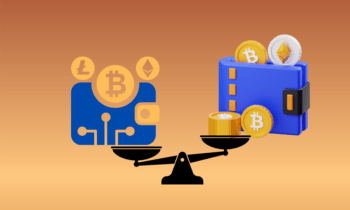NFTs have proven successful in the mainstream, even though they did become farcical during the mainstream boom of 2021. Now the immediate rush has settled down, the implication of NFTs in the real world has become much clearer including tracked tickets for events, access to exclusive artist content, and fashion accessories in games. Keeping this in mind, we’ve gathered together four NFT trends to follow in 2022 and beyond.
Government Regulations Increasing
Cryptocurrency has been faced with government regulations for years, but now they’re interested in NFTs as well. Because NFTs are bought using cryptocurrency and purchases are typically anonymous, financial regulators have become wary of the multi-billion NFT market. For example, the US Treasury released insights stating that the NFT market may be being used for terror ops and money laundering.
Criminal activity isn’t the only concern voiced by governments, with the Financial Action Task Force in France working hard to determine how NFTs should be classified. In the US, the Security and Exchange Commission is working on the same thing.
Mainstream NFT Adoption By Companies
Given the increased consumer interest in NFTs, companies have had to adapt to include NFTs and cryptocurrencies within their products. Many fashion brands, including Nike, have launched NFTs of upcoming lines and included them in games like Minecraft. These unique collectibles have the potential to bring in billions in revenue for these businesses.
NFTs on Crypto Exchanges
NFTs are typically sold through eBay-like auction stores, but the mainstream leap has led to them being adopted by cryptocurrency exchanges. One of the largest NFT marketplaces is OpenSea, which made an enormous $2.7 billion in January 2022 alone.
When buying NFTs on a marketplace, you need to invest in the coin in a centralized exchange and then transfer it into a credible wallet like DeFi wallet. This is no problem for veteran users, but beginners struggle with the process. Fortunately, many crypto exchanges are including NFTs in their tradable assets, making it much easier for beginners to access the market.
Alternative Chains Emerge
When NFTs first took off back in 2017, associated fees were relatively low, meaning anyone could buy an NFT on the Ethereum blockchain. However, after 2021’s NFT Mania, associated fees rocketed to thousands of dollars in some cases. Unfortunately, this closed off the marketplace to new users.
To solve the problem, NFTs began to launch alternative blockchains including Solana and Avalanche. However, in the beginning, projects struggled to take off because investors were used to Ethereum transactions. Fortunately, this changed over time and alternative blockchains are now worth millions.
Conclusion
NFTs are in the mainstream and they’re here to stay, meaning everyone needs to get on board and adopt their outlook, including governments. If the NFT market wishes to appeal to large audiences, further regulation is needed to avoid ownership disputes, investment costs must be reduced, and more business giants need to enter into the NFT space. The more the world familiarizes itself with blockchain and NFTs, the easier the transition will be.


